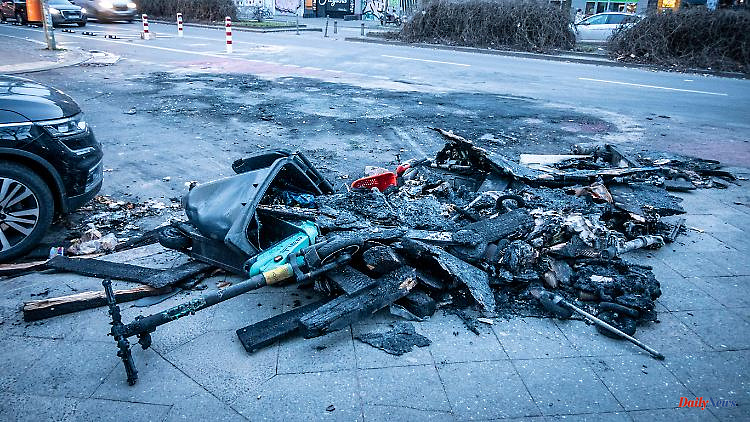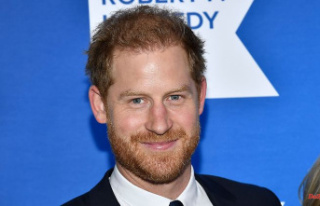On New Year's Eve, the police and emergency services are specifically attacked. The attacks spark a debate about who is attacking rescuers and law enforcement and why. The answers are not so easy to give.
When an emergency call comes in, they drive off: firefighters, police officers, paramedics and paramedics. Many emergency calls are to be expected every New Year's Eve, alcohol, lack of sleep, high spirits and pyrotechnics result in a mixture that entails a high risk potential. For this reason, the emergency services are at the start with a particularly large number of personnel that night. But on New Year's Eve, the rescuers and law enforcement officers themselves became the target of attacks. They are lured to certain locations with emergency calls and shot at with alarm guns and firecrackers. Though it burns, they cannot extinguish it until protection arrives for themselves. Rescue workers trying to take injured people to hospital are unable to proceed because someone threw a fire extinguisher into the ambulance's windshield.
Three days after the turn of the year, the horror of what is happening in Berlin, Hamburg and other cities is still great. The debate revolves around the safety of emergency services, respect for civil servants and the motivation of possible groups of perpetrators.
The head of the German police union, Rainer Wendt, said on ntv about the attackers that they were young men "with an apparent migration background". Federal Interior Minister Nancy Faeser spoke more neutrally of "chaotic people and violent criminals". Eyewitness reports also mainly speak of young men. The given age range is between 14 and 35 years. Some of them were hooded, which on a rather mild New Year's Eve suggests at least a certain amount of preparation. Faeser has already announced that they want to clarify the background to the crime. At least security forces managed to arrest some of the attackers.
After the incident, psychologist Ahmad Mansour called for a "nationwide integration debate" and justified this by saying that the perpetrators are people "who have not arrived in this society". It is "a group that partially despises and rejects the police and the rule of law," Mansour told the world.
Heinz Buschkowsky, the former district mayor of Neukölln, also speaks in the ntv interview of "educationally disadvantaged young men" who have the urge to "show off". It is doubtful that this explanation is sufficient. Because the attacks did not only occur in the "immigrant" Berlin district of Neukölln, but also in the almost rural Lichtenrade, in family-friendly Pankow, in hip Mitte and in middle-class Charlottenburg.
New Year's Eve arguments are not new. Conflicts that also exist on all other days of the year are often resolved on this night. In youthful high spirits and with deficits in risk assessment, young people shoot firecrackers and rockets at each other. Incidents of this kind are probably best compared to the tavern fights of the past century. The psychologist Mansour told the NDR that violence is now a youth phenomenon and that it is considered "cool". This coincides with the rejection of the police and rescue workers as representatives of the state, which is also perceived as weak because of the authoritarian upbringing pattern. "One seeks conflict with the police in order to prove one's masculinity," says Mansour.
FDP domestic politician Konstantin Kuhle called on Deutschlandfunk for rapid prosecution and conviction of perpetrators according to the accelerated procedure of the Code of Criminal Procedure. Buschkowsky blames the "cuddly justice" of the past few years for the escalation. "There is no consequence in this society, that's the problem," said the SPD politician. However, a 2017 research project on violence against police officers found that deterrence does not work for these offenders because they tend to have other motives.
A team led by Rita Steffes-enn from the Center for Criminology and Police Research found out that in the home, for example, it is often about defending one's own territory. Other groups of criminals used the police as opponents, so to speak, in order to enjoy violence. For still other perpetrators, the police are symbolic of the state, which they reject. This applies equally to left-wing and right-wing extremists. The motivation of the perpetrators from New Year's Eve is still largely in the dark. Frustration is just as conceivable as high spirits, a desire for violence or hatred of state bodies.
Kuhle doesn't see a particularly "New Year's Eve-specific phenomenon", but the "form of disrespect and violence" has increased in recent years. In certain areas of society there has been "an increase in aggression towards emergency services for years". This applies equally to major events and everyday rescue operations. In her statement, a spokeswoman for the Ministry of the Interior referred to the situation report for 2021, which recorded around 88,600 attacks on police officers. According to the spokeswoman, 84 percent of the known perpetrators are male and 70 percent are German citizens.
FDP politician Kuhle believes that "ghettoisation and a lack of prospects" could encourage violence, especially in large cities. That's why he thinks it's right to deal with questions of social structures and urban planning. Psychologist Mansour emphasizes that counter-narratives to outdated images of masculinity and upbringing must be conveyed in social media, schools and integration courses. It must be clear that this society absolutely rejects attacks on the police and emergency services.












